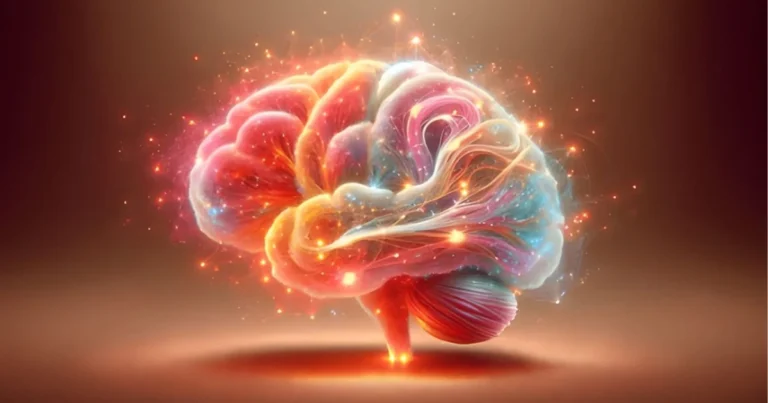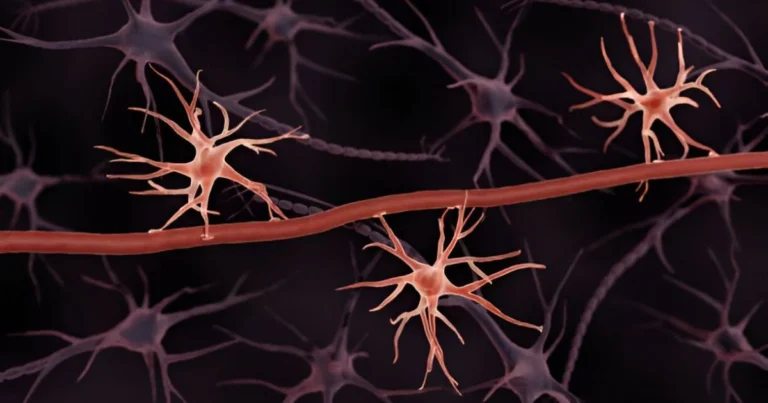The unseen truth: Exploring the neurological roots of Anton syndrome
Mrs. B, age 68, is hospitalized after a bilateral stroke affecting her occipital lobes. When asked if she can perceive her surroundings, she confidently replies that she sees perfectly well. However, she bumps into furniture, misses a glass of water placed in front of her, and invents imaginary scenes when asked about what is in the room. It is only when she is handed an object that she cannot grasp that she hesitates, then rationalizes: “It’s too dark in here.” This gap between her statements and reality is neither a lie nor a conscious refusal to acknowledge her blindness. Instead, it is a neurological disorder known as visual anosognosia, more commonly referred to as Anton Syndrome.
Although it has been described for over a century, this phenomenon continues to puzzle neuroscientists. How can a completely blind individual be convinced they can see? Why does the brain generate inaccurate responses rather than recognize the absence of vision?
Thanks to advances in neuroscience, this disorder shines a light on deep mechanisms governing how our brain constructs reality and grants us self-awareness.
Anton syndrome: When the brain refuses to acknowledge blindness
Visual anosognosia is a rare form of agnosia in which patients, despite total blindness caused by brain damage, deny their loss of vision. First described by Gabriel Anton in the 19th century, it typically arises from bilateral damage to the occipital cortex, often due to a stroke, hypoxic encephalopathy, or severe head trauma. Unlike other forms of sensory deficits, visual anosognosia does not simply stem from a lack of sensory information; it involves disruption in the brain circuits responsible for recognizing one’s own impairments.
In these patients, the primary visual cortex is destroyed, preventing any transmission of visual information. Nevertheless, their brains continue to create a subjective impression of sight, often accompanied by erroneous descriptions or even visual hallucinations. This contradiction, no visual perception paired with the certainty of seeing, relies on a compensatory mechanism in the brain, which, lacking real visual signals, produces responses based on memories, expectations, and fabricated reconstructions of the outside world.
Why do these patients not correct their mistake when confronted with the evidence? One explanation suggests that their brains are unable to compare their own predictions with sensory reality. Under normal conditions, when someone makes a perceptual error, certain circuits involved in metacognition and self-evaluation intervene to adjust perception. In patients with visual anosognosia, these circuits are disconnected from the visual regions, making it impossible to challenge their erroneous perception. This phenomenon was illuminated by a recent study led by Isaiah Kletenik and colleagues, which identified the neuronal mechanisms preventing these patients from recognizing their own blindness.
🔗 Read also: Phantom pain: When the body feels what no longer exists
Mapping the brain circuits of visual anosognosia
Published in September 2023 in Annals of Neurology, the study by Kletenik at Harvard Medical School aimed to map the brain networks involved in visual anosognosia. To achieve this, the researchers employed an innovative approach known as lesion network mapping, which identifies disrupted connections between damaged brain areas and the rest of the brain. This method provided fresh insight into the neuronal mechanisms underlying Anton Syndrome, revealing specific circuits whose dysfunction keeps patients from recognizing their own blindness.
Unlike other forms of sensory deficits, visual anosognosia does not simply stem from a lack of sensory information; it involves disruption in the brain circuits responsible for recognizing one’s own impairments.
The study analyzed 267 patients with motor and visual deficits, with or without anosognosia. Among them, 24 patients had severe visual anosognosia, while 69 others were aware of their vision loss. By comparing the brain connections of these different groups, the researchers identified the specific regions affected in patients with anosognosia.
Their findings showed that, unlike patients who were aware of their blindness, those with Anton Syndrome demonstrated altered connectivity among the associative visual cortex, the precuneus, and the posterior cingulate. These structures are vital for integrating sensory and metacognitive information. Disruption of these connections prevents the brain from detecting the mismatch between a lack of visual input and the conviction of seeing.
🔗 Explore further: The face that disappears: Inside the mind with prosopagnosia
The results suggest that visual anosognosia is not merely a perceptual deficit but a broader disorder involving memory and multisensory integration. In fact, the study also revealed that patients with visual anosognosia shared dysfunction with those suffering from motor anosognosia, particularly in the hippocampus and the precuneus, regions implicated in episodic memory and self-awareness. This finding reinforces the idea that recognizing a deficit depends on a process of comparing current perceptions with internal models stored in memory. Still, the researchers emphasize certain limitations of their study, such as the rarity of visual anosognosia, and stress the need to continue this research with interventional approaches, including noninvasive brain stimulation, to test the causal involvement of these networks.
The results suggest that visual anosognosia is not merely a perceptual deficit but a broader disorder involving memory and multisensory integration.
Rethinking reality through visual anosognosia
Anton Syndrome compels us to confront a fundamental question. If the brain can produce such a powerful illusion of vision in a blind individual, how far should we go in questioning the reliability of our own perception? This issue extends beyond neurology to the very foundation of our existence. Is what we perceive as reality truly what is, or merely what our brain allows us to experience?
At every moment, our brain filters, interprets, and reconstructs the world based on our past experiences, expectations, and the patterns it has formed. We navigate what we believe to be an objective world, unaware of how profoundly our convictions are shaped by unconscious processes. When these mechanisms operate normally, they create the illusion that our perception closely matches reality. However, when they break down, as in visual anosognosia, the chasm between what is and what we believe becomes dramatic.
This radical illusion is simply an extreme case of a phenomenon that affects everyone. Every day, our cognitive biases alter our view of the world, our memories reinterpret the past, and our beliefs shape what we hold to be true. The reality we perceive is fragile, constantly being reshaped to maintain internal consistency, even if it comes at the expense of objective accuracy. What anosognosic patients experience in the extreme, we experience to a lesser degree without realizing it.
🔗 Discover more: When familiar faces become strangers: Unraveling Capgras syndrome
What stands out in Anton Syndrome is the total lack of doubt. These patients never question their erroneous perception, not out of refusal, but because their brains do not offer the possibility. This unintentional blindness exposes a fundamental principle of cognition: we do not perceive reality directly but rather a version filtered and adjusted by our neural circuits. It underscores the thin line between certainty and illusion, between perception and misunderstanding.
Visual anosognosia thus prompts us to examine our own condition. Are we truly in control of our perception, or are we, like these patients, prisoners of a brain that silently, through its ceaseless activity, shapes our reality in its own way? Far from being a simple malfunction, this disorder reveals that our self-awareness and our sense of the world depend on delicate balances, balances whose precariousness we only recognize when they fail.
References
Kletenik, I., Gaudet, K., Prasad, S., Cohen, A. L., & Fox, M. D. (2023). Network localization of awareness in visual and motor anosognosia. Annals of Neurology, 94(3), 434–441.

Sara Lakehayli
PhD, Clinical Neuroscience & Mental Health
Associate member of the Laboratory for Nervous System Diseases, Neurosensory Disorders, and Disability, Faculty of Medicine and Pharmacy of Casablanca
Professor, Higher School of Psychology







